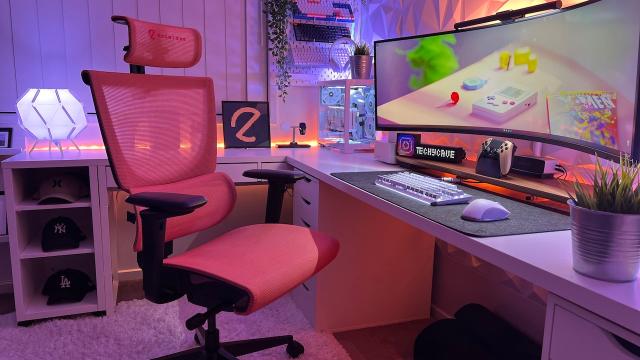
I never understood the hype around ergonomic chairs. Yes, I know. These are the scribblings of a fool. See, I always just used the crappy chairs at whatever office I was working at, and at home, I’d just sit on the couch with my laptop, or I’d use a regular chair at my desk – the kind of chair you’d see at a dinner table. Not very good for the ol’ spine.
During the first lockdown of 2020, I upgraded! And by that I mean I found an old red office chair on the side of the road. I used that at my home desk until last week – when my life changed forever. See, I finally saw the light; I finally got a nice chair. A proper ergonomic one that’s good for your back and feels like sitting on a cloud.

And it was even better once I unpacked it!

This got me thinking, as I sat back in the kind of bliss that is only truly known to those who happen to be sitting on a really nice chair – where did this all start? When did someone think, man, I need to add some wheels to a chair, pronto.
Well, let’s find out, shall we?
Darwin’s wooden armchair on wheels, early 1840s
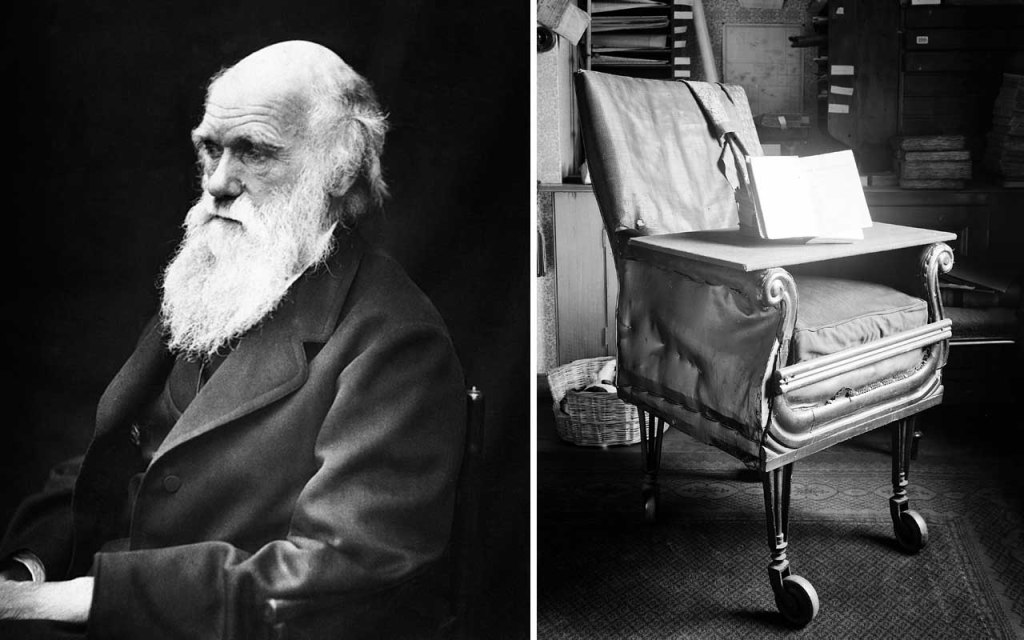
Our story begins in the early 1840s, when the ever-resourceful Charles Darwin created the “wooden armchair on wheels”. See, Darwin needed a way to manoeuvre around his workspace easily to reach his various specimens that were spread all around his office – so he attached some wheels to his chair and voila, the precursor to the modern office chair was born.
Fitting it came from the brain of the man who catapulted our understanding of evolution. Onya Charles.
The Centripetal Spring Armchair, 1849
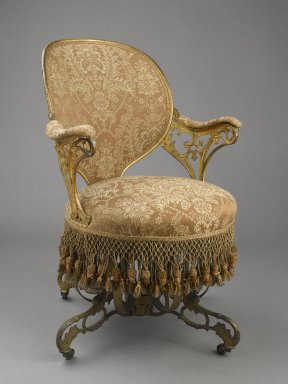
The introduction of mass rail transport in the mid-19th century brought with it a boom for businesses. They began to expand and thus needed more workers – and a lot of these workers spent a great deal of time sitting down performing various clerical duties.
Recognising this new need for better chairs more suited to these new working conditions, American inventor Thomas E. Warren designed the “centripetal spring armchair”. He even implemented a swivel mechanism that allowed workers to reach things without having to stand up. Quite handy indeed.
The Larkin Building chair, 1904
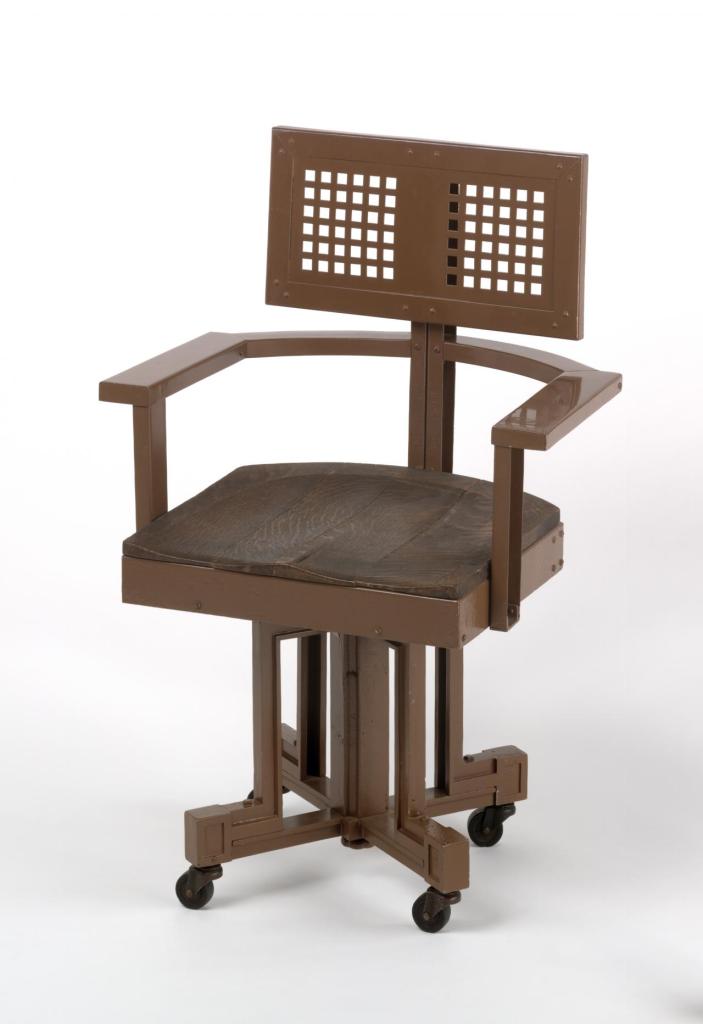
By the early 1900s, the ‘office worker’ was a staple of society. Designer Frank Lloyd Wright recognised that typists were experiencing various aches and pains associated with poor posture, and so he took it upon himself to do something about it. What resulted was the “Larkin building chair”, designed to accompany the Larkin building – which he also designed. Quite a busy lad.
While the chair was a step in the right direction in terms of improving posture and comfort for office workers, it did come to be known by a rather unfortunate nickname – the suicide chair, due to its narrow wheelbase which had the tendency to tip over. While the nickname was rather dramatic, the issue was nonetheless a concern. Still, even though Wright’s design wasn’t perfect, it did play its part in bringing us one step closer to the modern office chair.
The “Ergon” chair, 1976

1976 saw the birth of the first “modern” office swivel chair, the kind of chair that could look at home in an office today, albeit with a retro kind of feel. The revolutionary design came from the mind of Bill Stumpf, a designer for the American furniture company Herman Miller. He called his creation the “Ergon” chair, which drew upon the new science of ergonomics.
Stumpf had a long-held fascination with the chairs used by the office workers of the day. A whole decade before his revolutionary design, he penned a paper titled “A chair is a chair is a problem” while researching at the University of Wisconsin in 1966.
In the paper, Stumpf argues that “many of us spend eight hours a day in a chair that is uncomfortable, that restricts our movement and inhibits our performance”. Too right Stumpf, too right.
Today
Imagine the look on old mister Darwin’s face if he could snag a glimpse of the office chairs of the modern age. It’s quite interesting to chart the course of the first office chair – essentially a rigid armchair on wheels – to the ultra-light and comfy ones we have today.
That first chair revolutionised office chair mobility, sure, but imagine the back pain you’d get working from it over prolonged periods. As time went on, chairs became more adjustable to kind of begin suiting the various beautiful shapes we humans come in, but the real extent of this was essentially just a lever to adjust height that became the norm across the board somewhere between the advent of the ergon chair and today.
And that’s pretty much the customization level I was used to – moving my office chair up and down – that’s pretty much been it for most chairs I’ve used in my life. So the first time I sat on my ErgoTune chair I felt like Neil Armstrong taking his first steps on the big cheese in the sky. Okay, a tad dramatic, but it does go to show how far we’ve progressed.
These days, we’re blessed with features that make world-class office chairs truly world-class. Things like being able to adjust backrest height, ensuring the lumbar support actually fits your c-shape curve accurately, no matter your height, or adjustable headrests and seat depths, to mesh materials perfect for breathability, are really making life better than it ever has been for office workers and gamers alike.
Hell, some of these companies even have armrest adjustments that can be so perfectly adapted to smartphone gaming that you’ll find yourself running up a Genshin Impact microtransaction debt quicker than you can say “microtransactions have killed modern gaming”.
We’ve really come a long way, and companies like ErgoTune are leading the charge with continuous innovation resulting in unparalleled comfort and style. And don’t even get me started on the lumbar support. My word, the collective lumbars of humanity have never been more supported.
ErgoTune’s latest design, the ErgoTune Supreme V3, is an office worker’s dream, with customisation options to tailor fit to any body shape, leaving you feeling snug, supported, and oh so comfy. This means that whether you’re an extra small or an extra large, the chair will conform to fit you – not the other way around, which is what most chairs throughout history (and even today) have demanded.
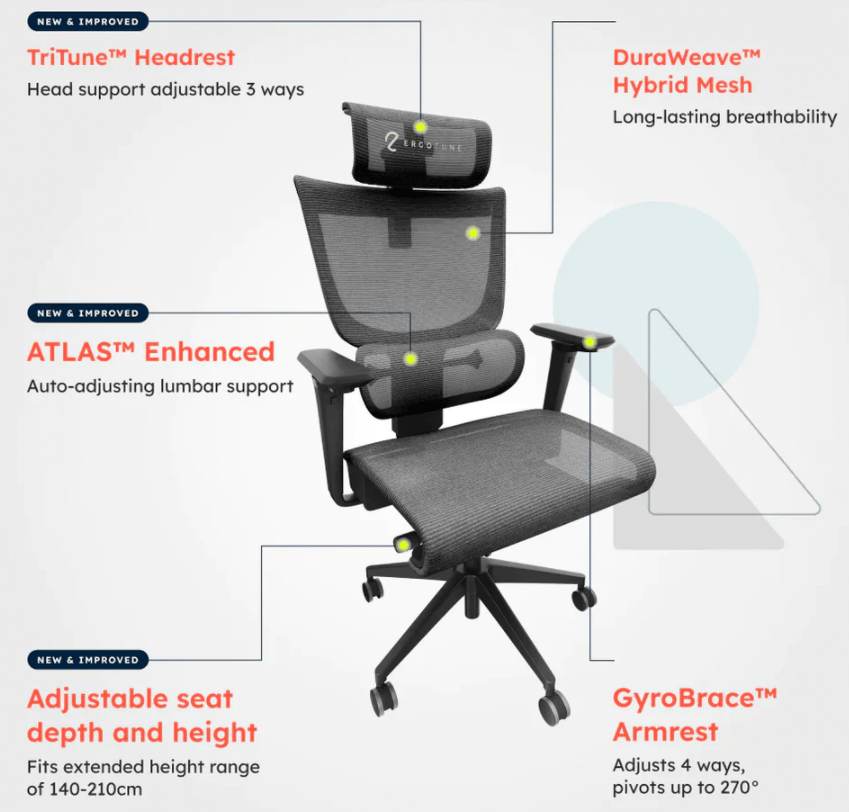
This is not only peak modern office chair, it’s a symbol of human ingenuity; a physical manifestation of humanity’s desire to sit, and sit well, dammit. Now, imagine what wonders the future will hold. Hell, maybe they’ll have chairs that talk to you and sing you lovely little songs and maybe even invite you to parties! Now, wouldn’t that be a nice change of pace?
